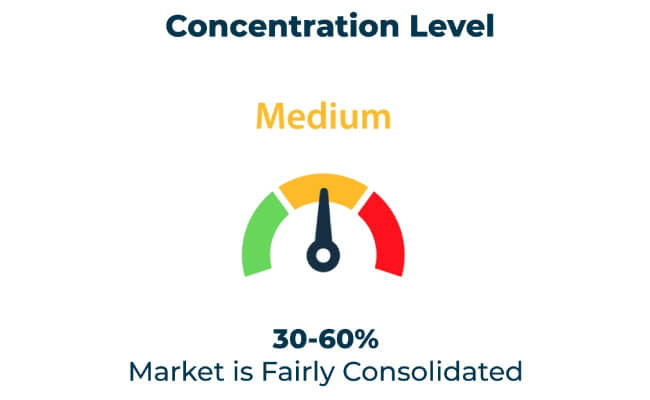The flexible plastic packaging industry in Europe is growing at a rapid pace, as demand for lightweight, durable, and cost-efficient packaging solutions is increasing. Flexible plastic packaging offers superior functionality, such as extended shelf life, reduced material usage, and enhanced consumer convenience, making it indispensable across industries like food and beverage, pharmaceuticals, and personal care.
European is projected to reach USD 31.8 billion by 2035, with a compound annual growth rate (CAGR) of 3.4%. The main trends are the growing mono-material packaging, innovation in recyclable and biodegradable films, and regulatory efforts that promote sustainability.
Manufacturers are focusing on advanced materials, digital printing technologies, and customizable designs to address the market's evolving needs. Collaboration with brand owners ensures alignment with environmental goals and consumer preferences.
| Attributes | Values |
|---|---|
| Projected Global Value (2035) | USD 31.8 billion |
| Value-based CAGR (2025 to 2035) | 3.4% |
Factors Driving Market Growth
The flexible plastic packaging market in Europe is growing as a result of increased focus on sustainability, regulatory requirements, and consumer demand for eco-friendly solutions. Technological advancements also propel this growth.
| Category | Market Share % |
|---|---|
| Top 3 (Amcor, Mondi, Sealed Air) | 19% |
| Rest of Top 5 (Berry Global, Constantia Flexibles) | 04% |
| Next 5 of Top 10 Players | 14% |
Type of Player & Industry Share (%)
| Type of Player | MarketShare (%) |
|---|---|
| Top 10 Players | 37% |
| Next 20 Players | 22% |
| Remaining Players | 41% |

Year-on-Year Leaders
North America and Asia-Pacific offer European manufacturers opportunities to grow in these markets, which are increasingly demanding eco-friendly and innovative flexible packaging.
In-House vs. Contract Manufacturing
| Region | Western Europe |
|---|---|
| Market Share (%) | 40% |
| Key Drivers | Demand for eco-friendly trash bags and recycling initiatives. |
| Region | Western Europe |
|---|---|
| Market Share (%) | 30% |
| Key Drivers | Stringent regulations on plastic waste and high adoption of compostable bags. |
| Region | Northern Europe |
|---|---|
| Market Share (%) | 20% |
| Key Drivers | Rapid urbanization and government focus on waste management. |
| Region | Southern Europe |
|---|---|
| Market Share (%) | 10% |
| Key Drivers | Growing demand for cost-effective waste solutions. |
The European flexible plastic packaging industry will develop with new material science, automation, and digital technology innovations. Investments in mono-material solutions, bio-based designs, and energy-efficient manufacturing will provide competitive advantages. Costs and sustainability will be further optimized through automation and AI-driven production processes.
| Tier | Key Companies |
|---|---|
| Tier 1 | Amcor, Mondi, Sealed Air |
| Tier 2 | Amcor, Mondi, Sealed Air |
| Tier 3 | Uflex, FlexPak, Toray Plastics |
The flexible plastic packaging industry in Europe is expected to grow sustainably, driven by innovations in material science, consumer preferences, and regulatory frameworks. Companies focusing on recyclable designs, bio-based materials, and advanced production technologies will secure a competitive edge in this dynamic market.
Key Definitions
Abbreviations
Research Methodology
This report relies on primary research, secondary data analysis, and market modeling. Insights were validated through consultations with industry experts.
The flexible plastic packaging industry in Europe includes recyclable, bio-based, and high-barrier solutions for food, pharmaceuticals, personal care, and e-commerce, addressing sustainability, convenience, and cost-efficiency.
Growth is driven by sustainability regulations, consumer demand for eco-friendly packaging, and advancements in flexible material technologies.
European is projected to reach USD 31.8 billion by 2035, with a compound annual growth rate (CAGR) of 3.4%.
Key players include Amcor, Mondi, and Sealed Air, known for their innovative and sustainable packaging solutions.
Challenges include regulatory compliance, high production costs for sustainable materials, and recycling infrastructure limitations.
Opportunities lie in bio-based materials, mono-material designs, and growth in e-commerce and online retail sectors.






Full Research Suite comprises of:
Market outlook & trends analysis
Interviews & case studies
Strategic recommendations
Vendor profiles & capabilities analysis
5-year forecasts
8 regions and 60+ country-level data splits
Market segment data splits
12 months of continuous data updates
DELIVERED AS:
PDF EXCEL ONLINE
Europe Cruise Market Forecast and Outlook 2025 to 2035
Europe Massage Therapy Service Market Size and Share Forecast Outlook 2025 to 2035
European Union Tourism Industry Size and Share Forecast Outlook 2025 to 2035
Europe Injection Molding Machines Market Size and Share Forecast Outlook 2025 to 2035
Europe Injection Moulders Market Size and Share Forecast Outlook 2025 to 2035
Europe and MENA Generic Oncology Drug Market Size and Share Forecast Outlook 2025 to 2035
Europe Masking Tapes Market Size and Share Forecast Outlook 2025 to 2035
Europe Liners Market Size and Share Forecast Outlook 2025 to 2035
Europe Dermal Fillers Market Size and Share Forecast Outlook 2025 to 2035
Europe Trolley Bus Market Size and Share Forecast Outlook 2025 to 2035
Europe Protease Market Size and Share Forecast Outlook 2025 to 2035
Europe Plant-Based Meal Kit Market Size and Share Forecast Outlook 2025 to 2035
Europe Rubber Derived Unrefined Pyrolysis Oil Market Size and Share Forecast Outlook 2025 to 2035
Europe Pet Food Market Analysis by Nature, Product Type, Source, Pet Type, Packaging, Distribution Channel, and Country - Growth, Trends, and Forecast through 2025 to 2035
Europe's Golden Generation Travel Market Size and Share Forecast Outlook 2025 to 2035
Europe Automotive Night Vision System Market Size and Share Forecast Outlook 2025 to 2035
Europe Winter Tourism Market Size and Share Forecast Outlook 2025 to 2035
Europe Bulk Bags Market Size and Share Forecast Outlook 2025 to 2035
Europe Fine Chemical Market Analysis - Growth, Applications & Outlook 2025 to 2035
Europe Industrial Lubricants Market: Growth, Trends, and Forecast 2025 to 2035

Thank you!
You will receive an email from our Business Development Manager. Please be sure to check your SPAM/JUNK folder too.
Chat With
MaRIA